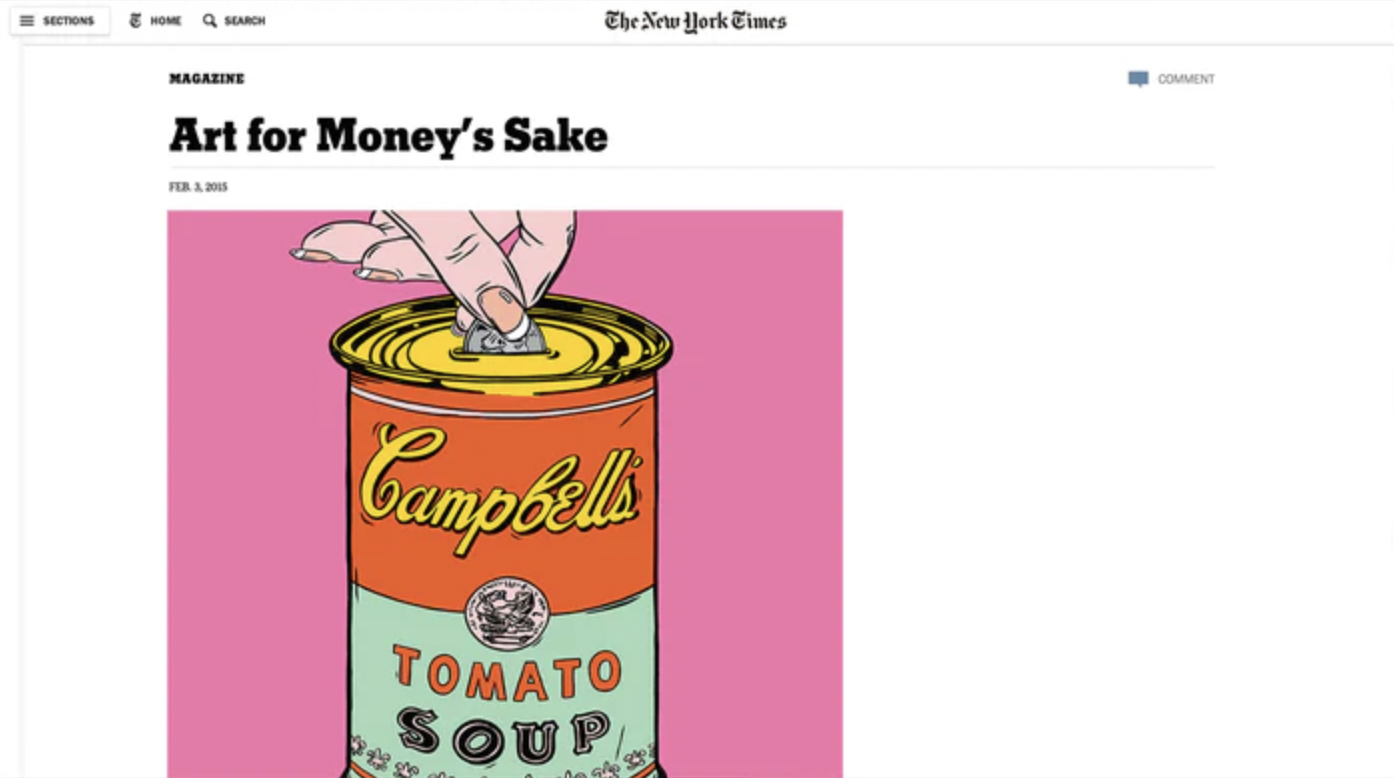
If you think the art world has become too much like a stock market, you’re not alone. In fact, a new website called ArtRank.com offers to help you play that market, with “buy,” “sell,” and “liquidate” recommendations for a host of young artists.
A selection of articles and mentions from various publications.

If you think the art world has become too much like a stock market, you’re not alone. In fact, a new website called ArtRank.com offers to help you play that market, with “buy,” “sell,” and “liquidate” recommendations for a host of young artists.
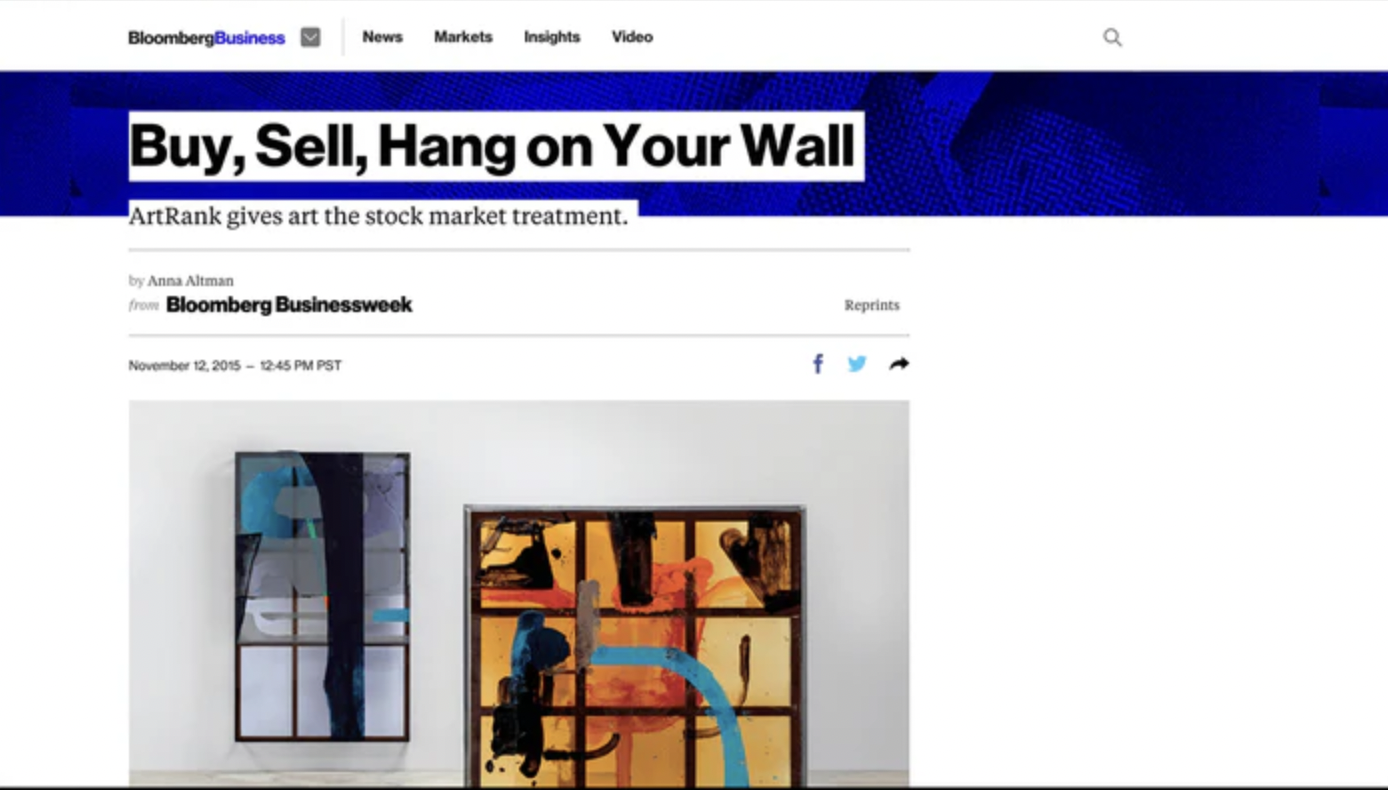
ArtRank gives art the stock market treatment.

For $3,500 a quarter, ArtRank's clients get snappy – some might say brutal – investment advice based on information such as past sales, studio output, upcoming shows and posts on Instagram and Twitter. The service, which he says uses complex algorithms developed for investment banking, is limited to 10 subscribers at a time; when Rivera threw the list open in April, there were, he says, more than 80 applications.
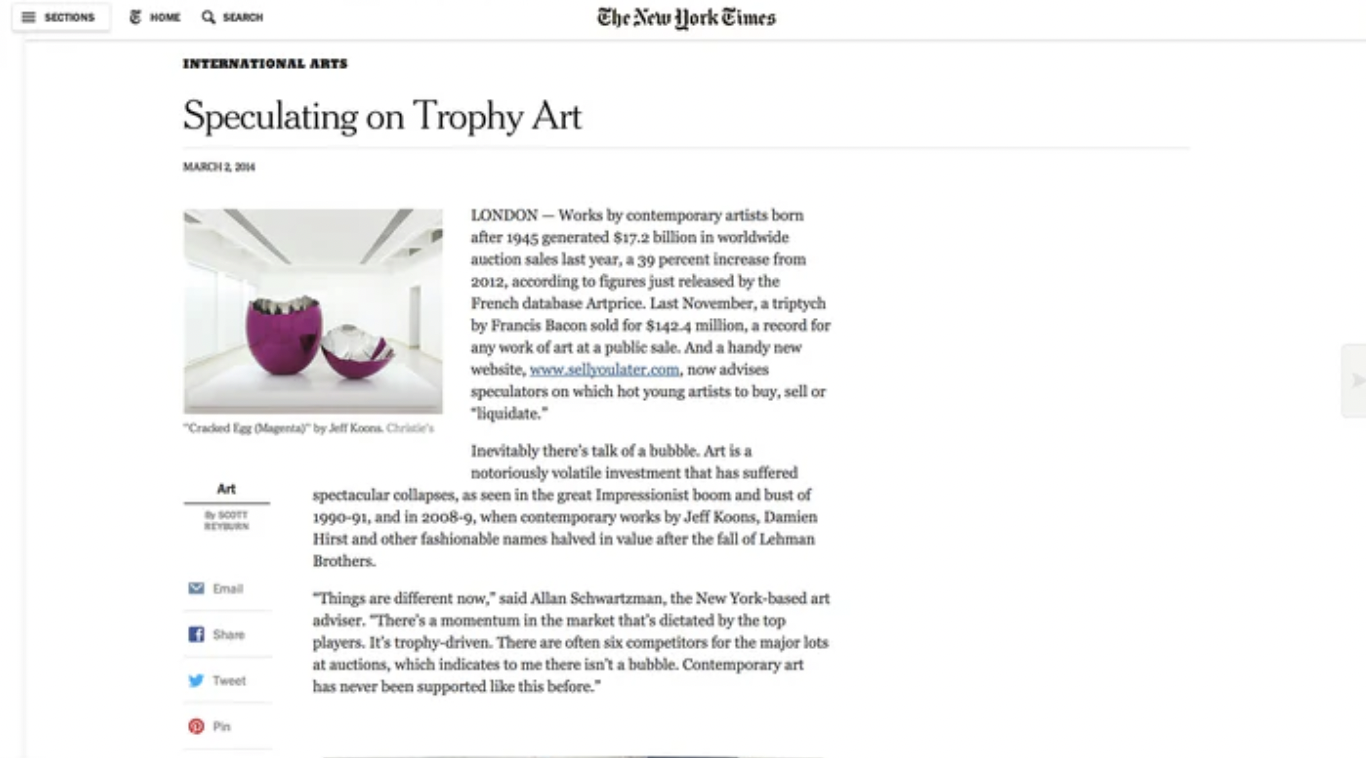
Works by contemporary artists born after 1945 generated $17.2 billion in worldwide auction sales last year, a 39 percent increase from 2012, according to figures just released by the French database Artprice. Last November, a triptych by Francis Bacon sold for $142.4 million, a record for any work of art at a public sale. And a handy new website, www.sellyoulater.com, now advises speculators on which hot young artists to buy, sell or “liquidate.”
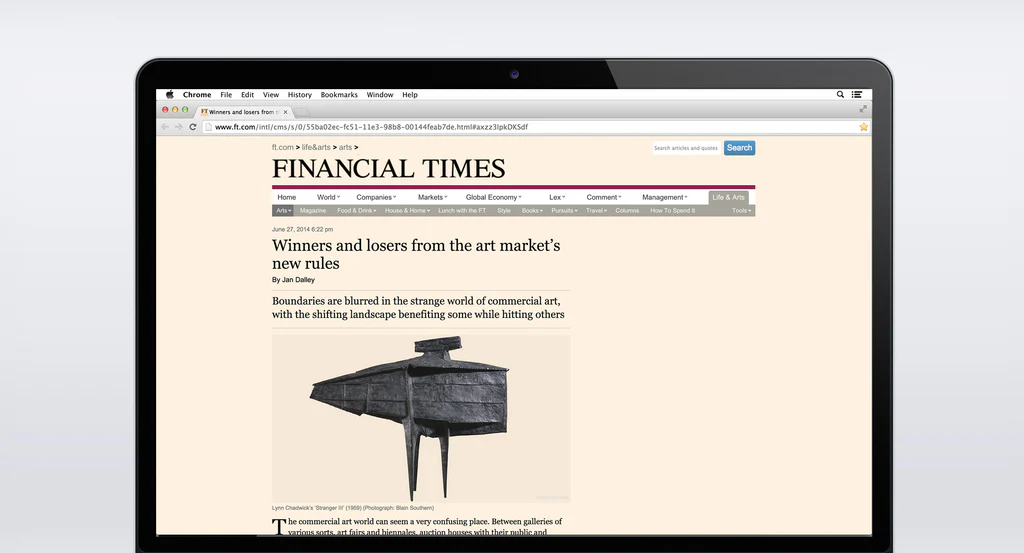
The three – who identify themselves as a data scientist, a financial engineer and an art professional – have published a chart of work by emerging artists with classifications such as “Buy Now”, “Sell now”, “Liquidate” and “Purgatory”. Their analysis is not always apparently logical – for example New York-based rising star Lucien Smith, who sprays canvases with a fire extinguisher, gets both a “buy now” and a “sell now” in the listings.
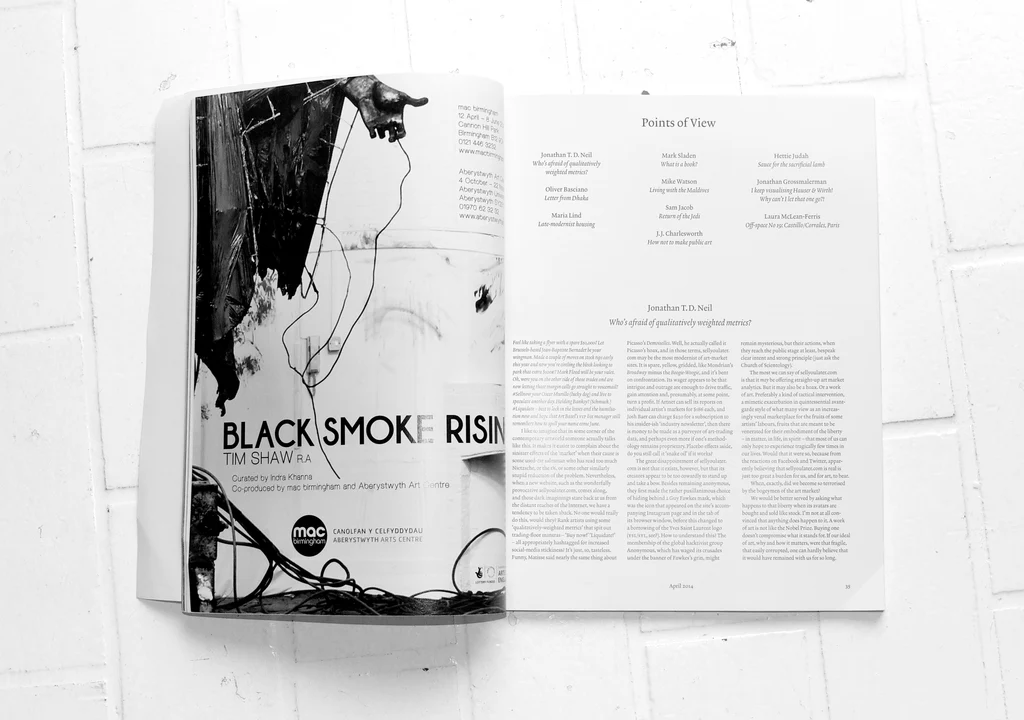
Funny, Matisse said nearly the same thing about Picasso’s Demoiselles. Well, he actually called it Picasso’s hoax, and in those terms, sellyoulater.com may be the most modernist of art-market sites. It is spare, yellow, gridded, like Mondrian’s Broadway minus the Boogie-Woogie, and it’s bent on confrontation. Its wager appears to be that intrigue and outrage are enough to drive traffic, gain attention and, presumably, at some point, turn a profit. If Artnet can sell its reports on individual artist’s markets for $186 each, and Josh Baer can charge $250 for a subscription to his insider-ish ‘industry newsletter’, then there is money to be made as a purveyor of art-trading data, and perhaps even more if one’s methodology remains proprietary. Placebo effects aside, do you still call it ‘snake oil’ if it works?
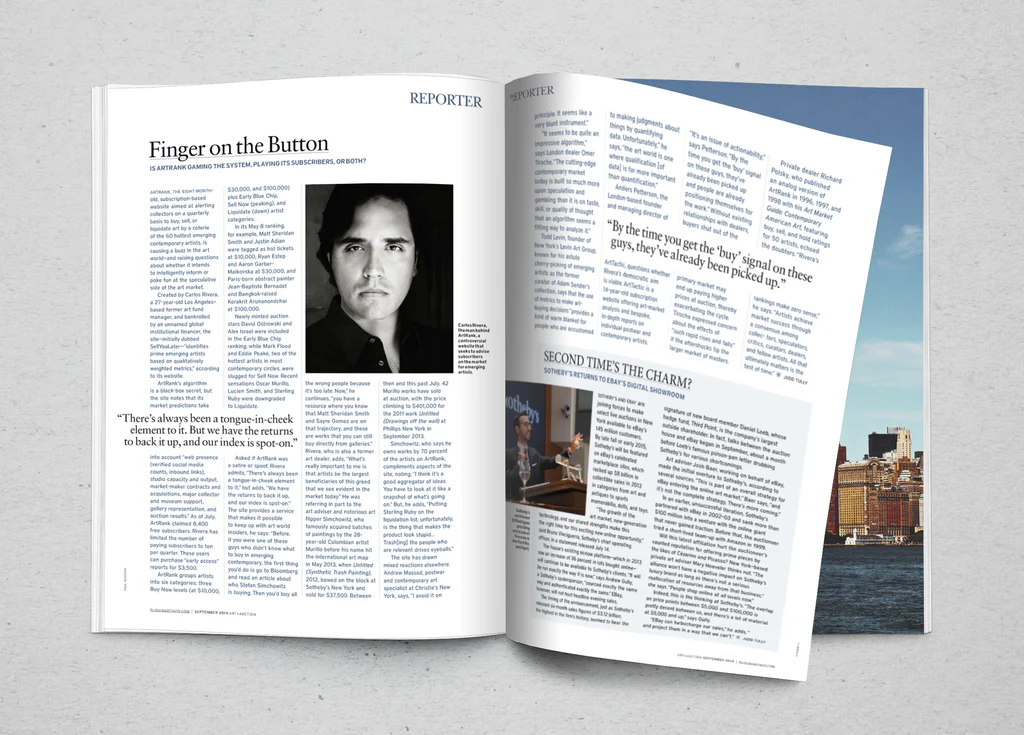
There's always been a tongue-in-cheek element to it. But we have the returns to back it up, and our index is spot-on.

What is new is the comprehensive and predictive way in which ArtRank seeks to monitor the market. Comprehensive, because it not only collects public information on exhibitions and auction prices, but also digital information on the artist’s visibility and popularity on social-media platforms such as Facebook, Twitter, and Instagram, as well as insider information about the artist’s production capacity or the amount of collector interest in his or her work. Predictive, because it does not just seek to identify who is emerging, but whowill be. Akin to the statisticians of the American supermarket Target, who, in a widely circulated news story, knew a teenage girl was pregnant before her father did, just by analyzing her spending patterns, ArtRank thinks it knows who the next successful artists will be even before the artists’ own gallerists are aware.

Algorithms can predict whether a song will top the charts too. Using data from The Echo Nest, a music intelligence lab, data scientists analysed 2015’s top 10 dance music tracks for tech site Motherboard, finding their popularity largely predictable. More controversial is the use of algorithms to determine the worth of art. ArtRank, a service for deep-pocketed collectors, puts a “buy”, “sell” or “liquidate” rating on the creations of contemporary artists, in a similar vein to how an analyst rates stocks. The service’s founder, Carlos Rivera, claims to have developed his algorithms from investment banking. Unsurprisingly, many are aghast at the idea of anointing the next generation of potential Jeff Koonses as “hot” or “not” before they’ve been allowed to develop fully.